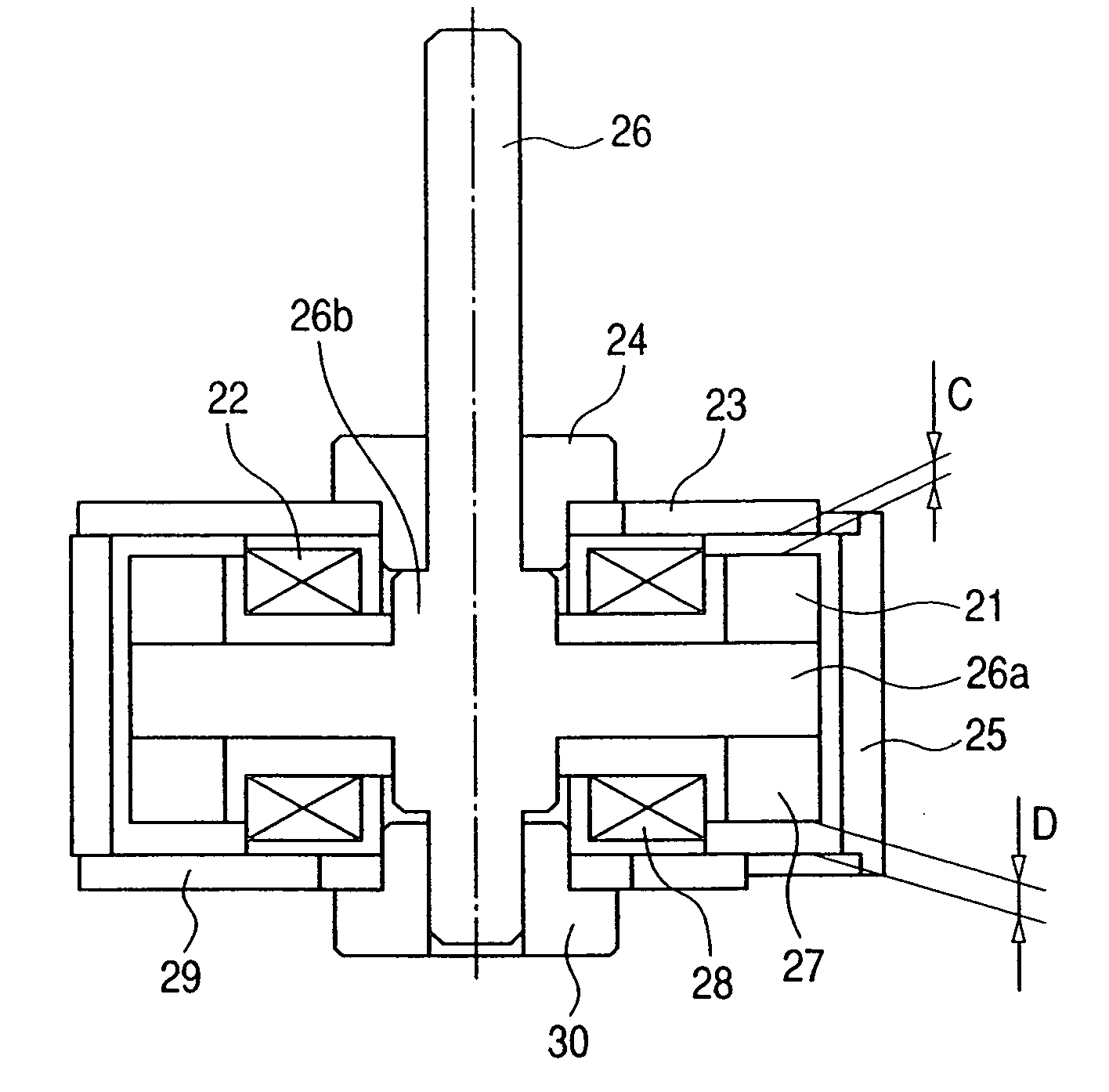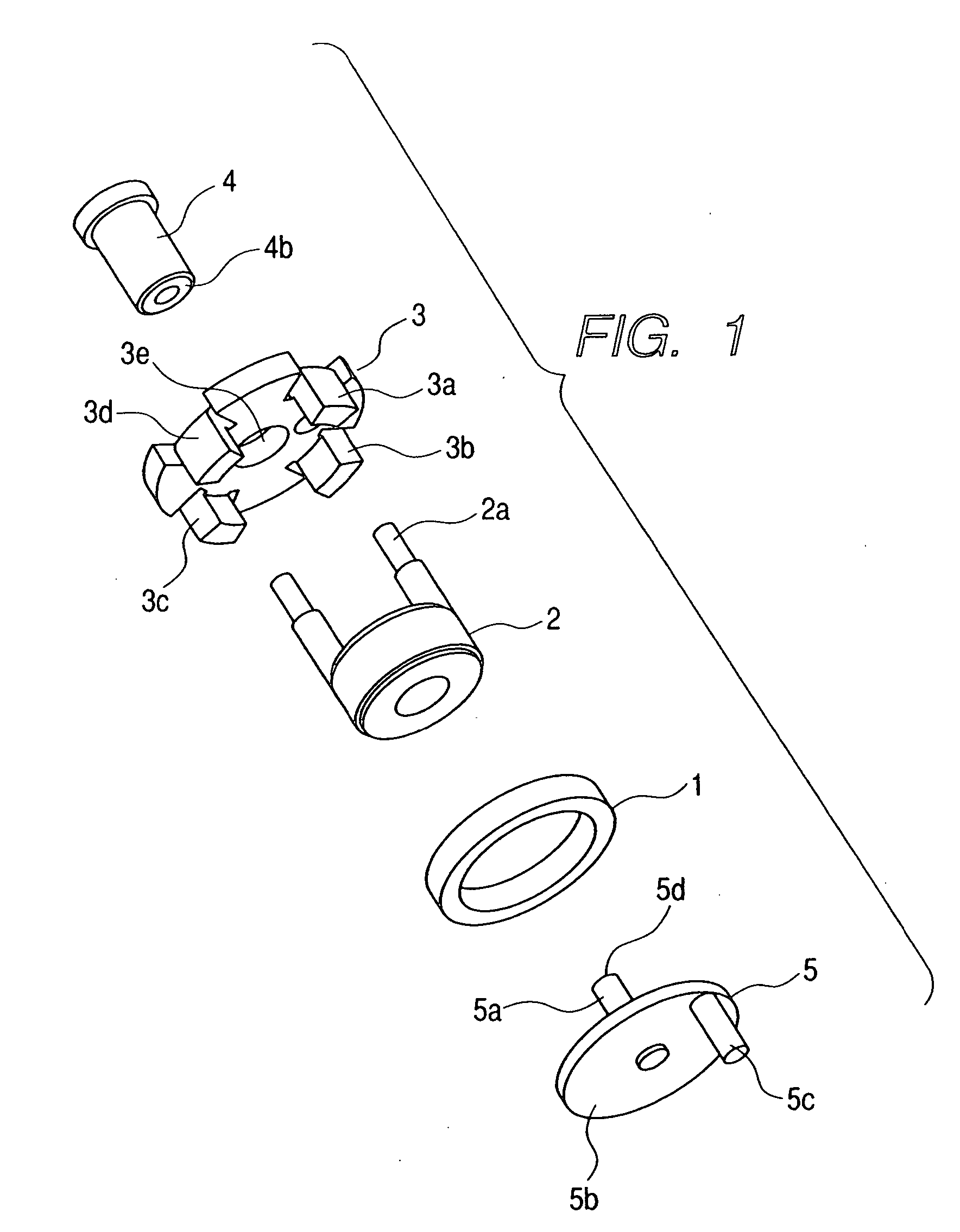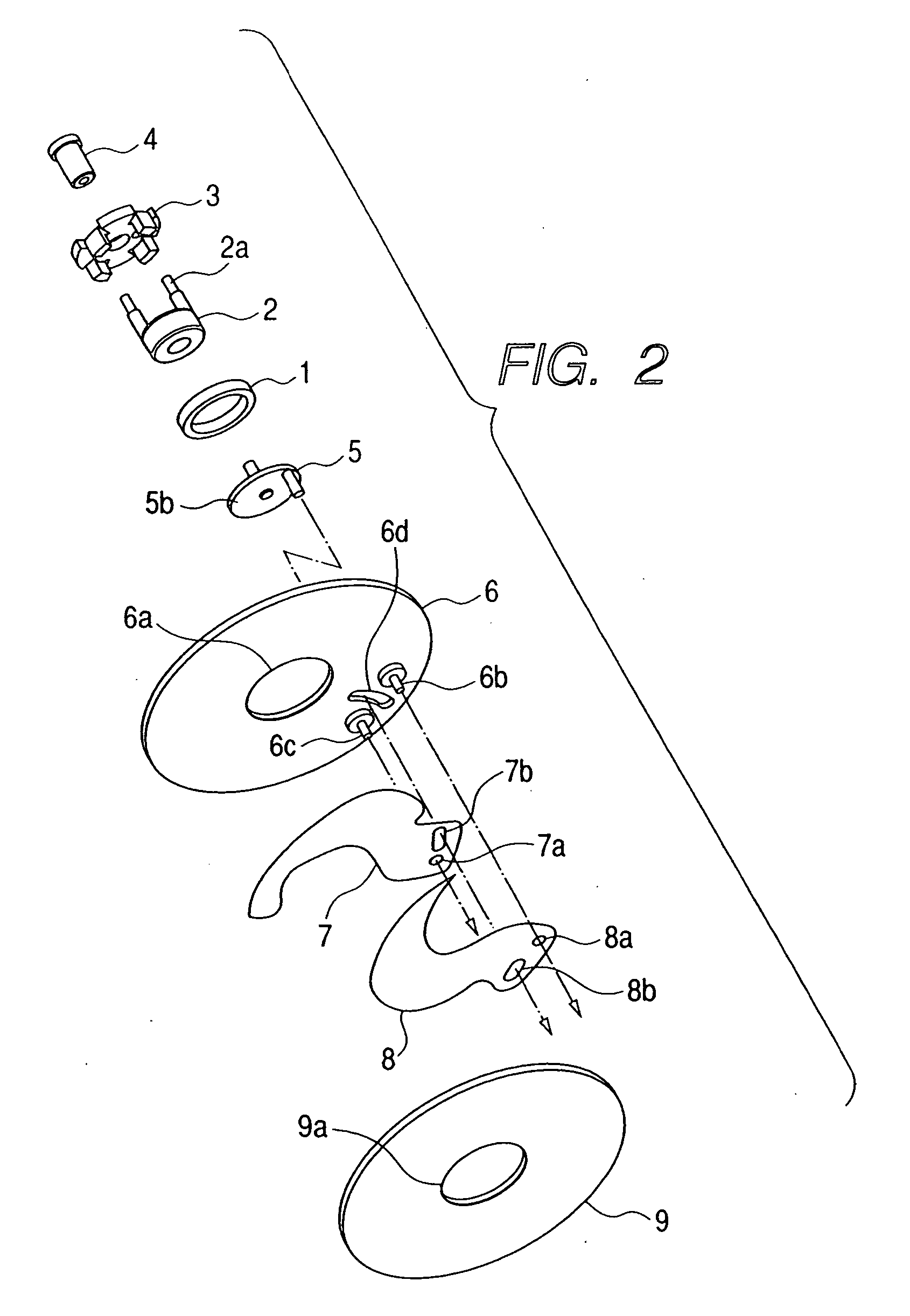Actuator, light quantity adjusting apparatus, and stepping motor
a technology of light quantity adjusting apparatus and stepping motor, which is applied in the direction of horology, instruments, magnetic circuit shape/form/construction, etc., can solve the problems of extreme slimming, difficult to locate a guide rod for a lens, and a great amount of space for coils and stators, etc., to achieve high efficiency, low cost, and high part fit
- Summary
- Abstract
- Description
- Claims
- Application Information
AI Technical Summary
Benefits of technology
Problems solved by technology
Method used
Image
Examples
first embodiment
[0073] FIGS. 1 to 4 show an actuator and a light quantity adjusting apparatus according to a first embodiment of the present invention. More specifically, FIG. 1 is an exploded perspective view showing the actuator. FIG. 2 is an exploded perspective view showing a light quantity adjusting apparatus in which the actuator shown in FIG. 1 is incorporated as a driving source. FIG. 3 is a sectional view in an axial direction, showing the light quantity adjusting apparatus. FIGS. 4A and 4B are bottom views of B-B in FIG. 3, showing a state of rotation operation of a magnet. FIG. 4A shows a magnet and a stator in a state in which the magnet is rotated counterclockwise when viewed from a base plate side. FIG. 4B shows the magnet and the stator in a state in which the magnet is rotated clockwise by 30 degrees from the state shown in FIG. 4A by switching energization to the coil.
[0074] In FIGS. 1 to 4A and 4B, a ring magnet 1 has magnetized portions which are formed by dividing a surface of ...
second embodiment
[0106]FIG. 5 is a perspective view showing an actuator according to a second embodiment of the present invention. Only a point different from the first embodiment will be described.
[0107] In the first embodiment, each of the stator 3 and the bearing 4 is made of the soft magnetic material. In the second embodiment of the present invention, the stator 3 and the bearing 4 are integrally formed, so that a stator 13 having a bearing portion 13e is obtained. Such a structure can be realized by, for example, forging, drawing, or a metal injection mold manufacturing method.
[0108] In FIG. 5, the stator 13 includes not only magnetic pole teeth 13a, 13b, 13c, and 13d but also the bearing portion 13e and acts to smoothly rotate the stator 5. Therefore, a process for assembling the bearing and the stator in the first embodiment is unnecessary, so that a cost can be further reduced. When the two parts are separated from each other, four parts, that is, the magnet, the rotor, the bearing, and t...
third embodiment
[0110]FIG. 6 is a sectional view in an axial direction, showing an actuator according to a third embodiment of the present invention, in which a stainless steel rod different from that in the first embodiment and the second embodiment is used as a shaft of a rotor.
[0111] In the case where a large number of magnetic fluxes are not generated from a characteristic of a light quantity adjusting apparatus and magnetic saturation is unlikely to cause when magnetic fluxes flow from a disk portion 16a of a rotor 16 to the stator 3, for example, a stainless steel rod is used as a shaft 15 of the rotor 16. A soft magnetic material is used for the disk portion 16a and the like and the stainless steel shaft is produced by press fitting or the like. Other portions are identical to those in the first embodiment and thus the description is omitted here.
[0112] Magnetic fluxes around the coil 2 flow through the stator 3 near the coil 2, the magnet 1, the disk portion 16b of the rotor 16, the flat ...
PUM
 Login to View More
Login to View More Abstract
Description
Claims
Application Information
 Login to View More
Login to View More - R&D
- Intellectual Property
- Life Sciences
- Materials
- Tech Scout
- Unparalleled Data Quality
- Higher Quality Content
- 60% Fewer Hallucinations
Browse by: Latest US Patents, China's latest patents, Technical Efficacy Thesaurus, Application Domain, Technology Topic, Popular Technical Reports.
© 2025 PatSnap. All rights reserved.Legal|Privacy policy|Modern Slavery Act Transparency Statement|Sitemap|About US| Contact US: help@patsnap.com



